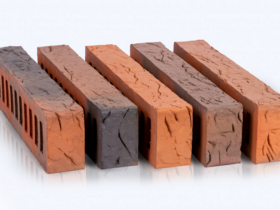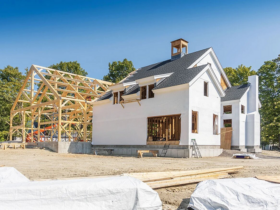It is made by gluing together several lamellas (oblong wooden plates) under high pressure; to increase strength, the layers are laid on opposite sides, depending on the location of the annual rings of the wood.
The finished product is edged boards dried in chambers to a moisture content of 6 to 10%. The product is produced in overall dimensions up to 12 m in length and 75-300 mm in thickness. Due to the absence of water in the array, environmentally friendly finished products do not shrink, crack, or deform. Walls made of laminated veneer lumber do not need to be finished.
The material may be susceptible to contamination by harmful microorganisms or insects. To prevent this, careful treatment with special protective compounds is required. Unlike solid wood, which has a heterogeneous structure (for example, it may have knots or cracks), this type of timber has predictable properties, but is also more expensive. It conducts heat less and is more difficult to set on fire. However, over time, cracks often form at the ends at the gluing site.
Advantages and disadvantages
No deformation, environmental friendliness, good thermal insulation, fire resistance, aesthetic appearance, does not require finishing
High price relative to solid wood; cracks may appear at the ends at the gluing points over time; there is a high risk of infection by microorganisms








